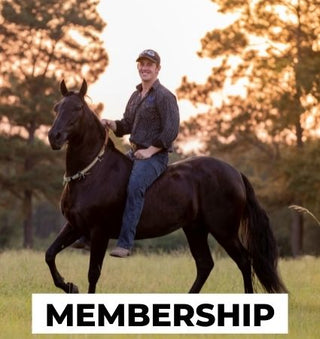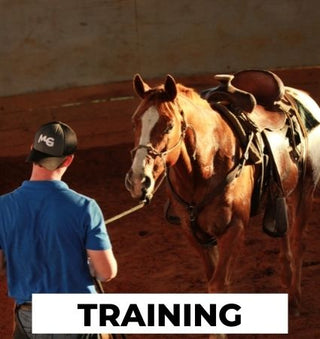Today we are talking about fitting the MG halter correctly to your horse!
Watch The Video Here Or Continue Reading Below!
Intro to Halter Fitting
Hey hey guys, it's Michael Gascon, the horse guru, and I'm back with you live with Steel! Steel, our model for today, is a magnificent Arabian. I've received numerous messages from you all, asking about halter fit. If you're still unsure after this video, don't worry, we've got a handy tool on our website to assist you. Now, let's dive into it!
Understanding The Standard Halter
Steel here is sporting one of our natural horsemanship halters, specifically the standard version. This versatile halter is designed to fit a wide range of horses, from small drafts to big ponies. I personally use the standard for almost every horse I work with. Notice how it fits Steel perfectly with just the right amount of slack.
THE RIDING ADJUSTMENT
When it's time to ride, I'll take this clip and the last two knots of the halter, placing them snuggly across the bottom. This ensures the halter won't ride up his face, allowing Steel to be comfortable and focused during our sessions.
The Genius Of The Kidney Knot
Take a look at the halter, and you'll spot what we call a "kidney knot". This is located below the chin of the horse. This ingenious design allows for adjustments, making the loop larger or smaller for different-sized horses. However, we want to maintain a snug fit, so placing the clip at the bottom under his chin ensures it stays in place. This creates almost a western bosal feel.
Finding The Sweet Spot
People often wonder where to position the halter. A good starting point is halfway between the nostrils and the eyes. If your horse is acting spirited or being a bit difficult, lower the halter for more control and leverage. The lower it sits, the more pressure it applies.
TYING AND LEAVING
When it's time to tie Steel and leave him for a while, I'll raise the halter. The rule of thumb is to make sure the loop around his throatlatch, is smaller than his head. This prevents him from accidentally removing the halter.
Riding Position
For riding, especially if Steel feels a bit stiff or heavy, we lower the halter. This places it in the optimal position for our session, giving us the control and communication we need.
In Conclusion: The Versatility Of The MG Halter
This halter is truly a one-stop-shop for all your horse activities, except for the very specialized finish work. Whether it's trail riding, obstacle courses, or general training, this halter has you covered. It's been my go-to for over a decade and has never disappointed.
Thank you all so much for tuning in! If you have any more questions or need help selecting the right halter for your horse, head over to our website. Remember, nine times out of ten, the standard halter is what you'll want. Happy riding!
Check out more free training resources HERE!









